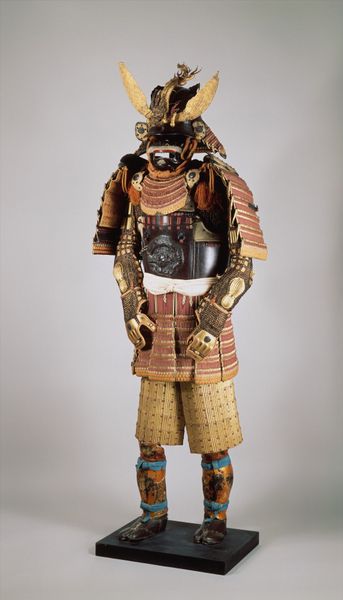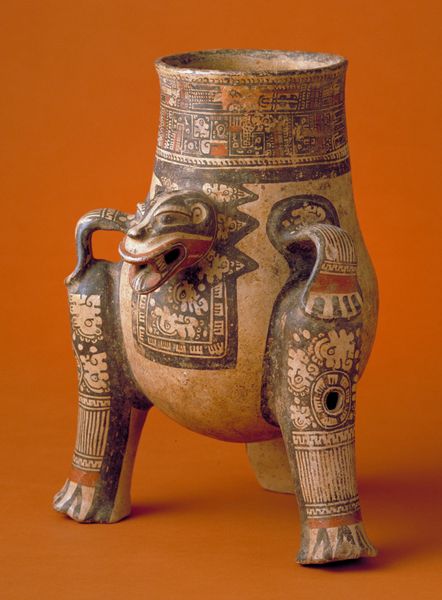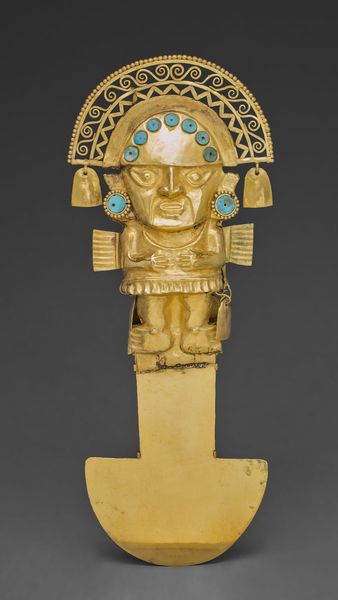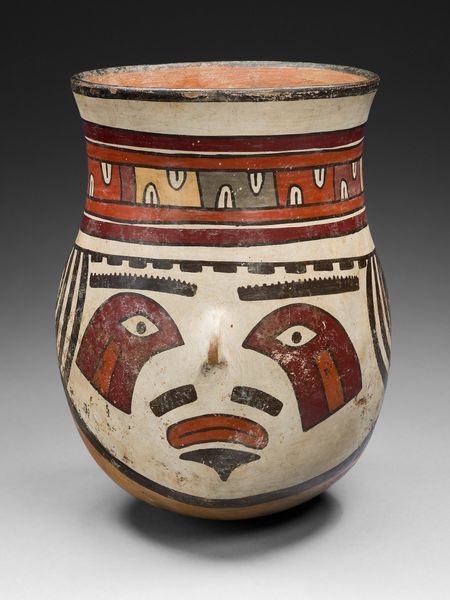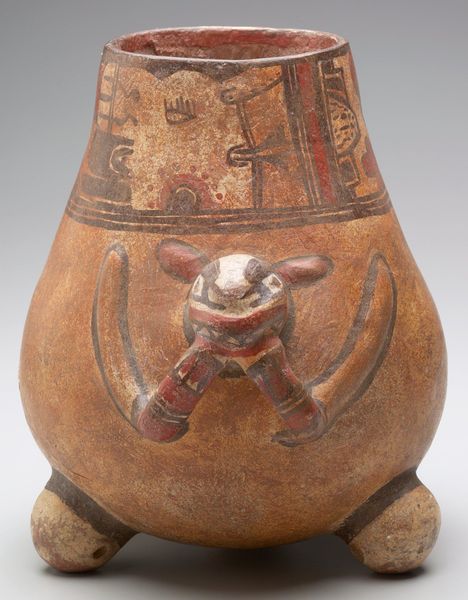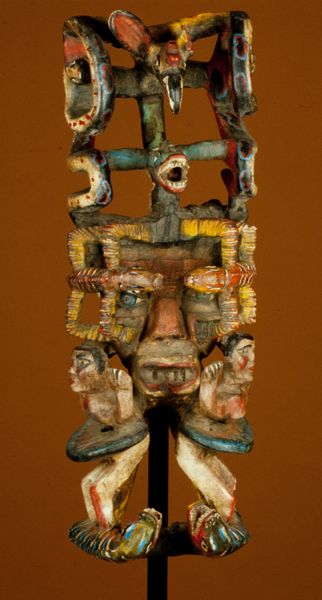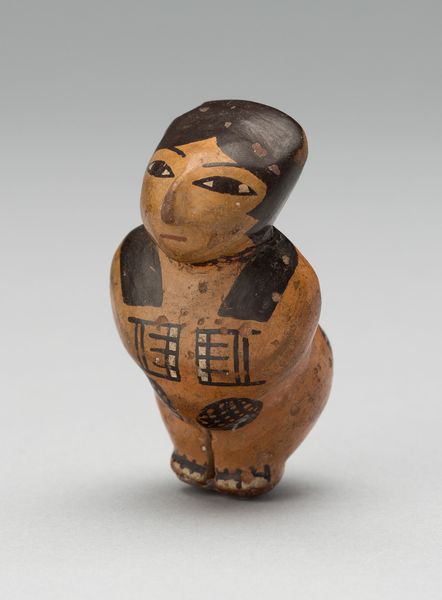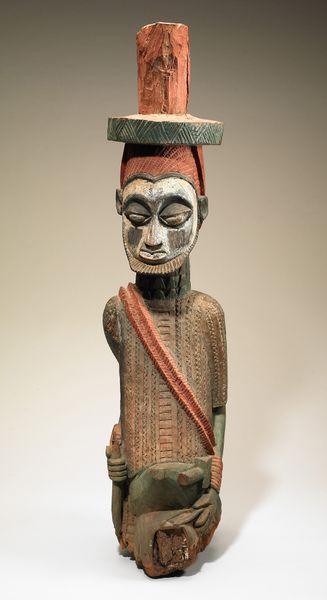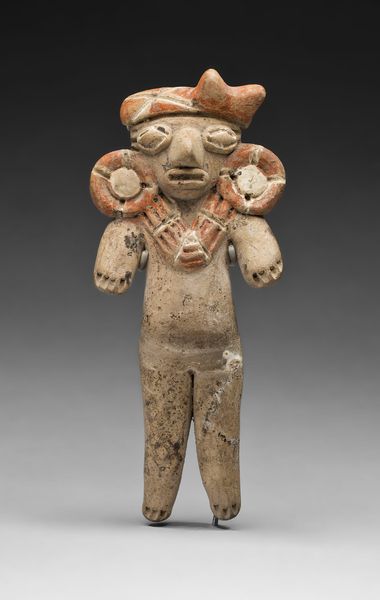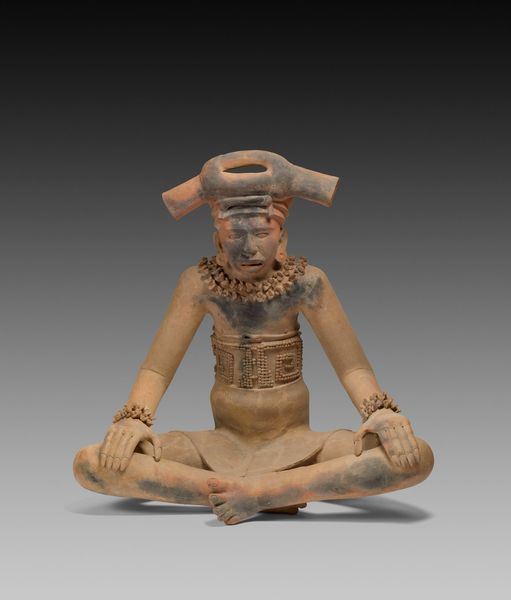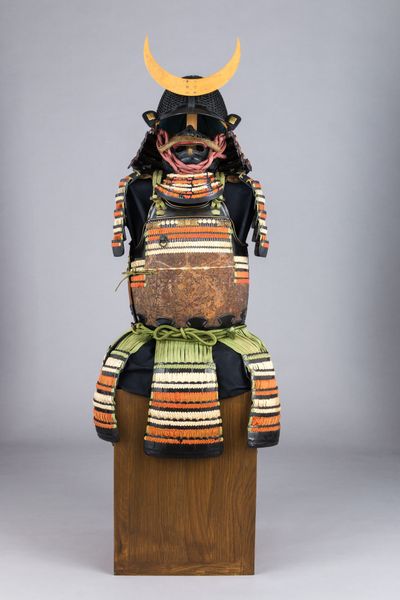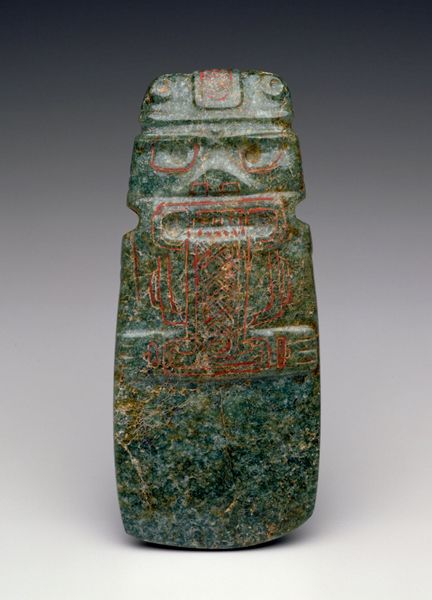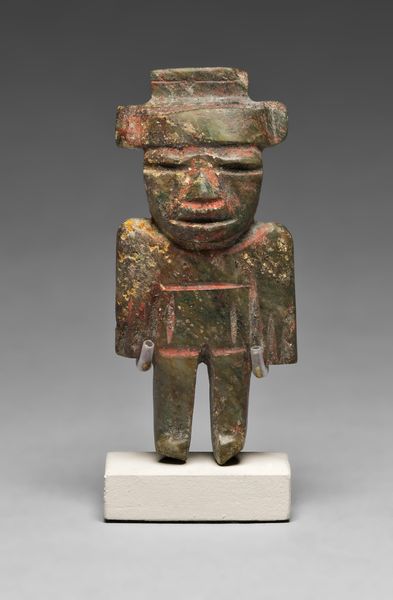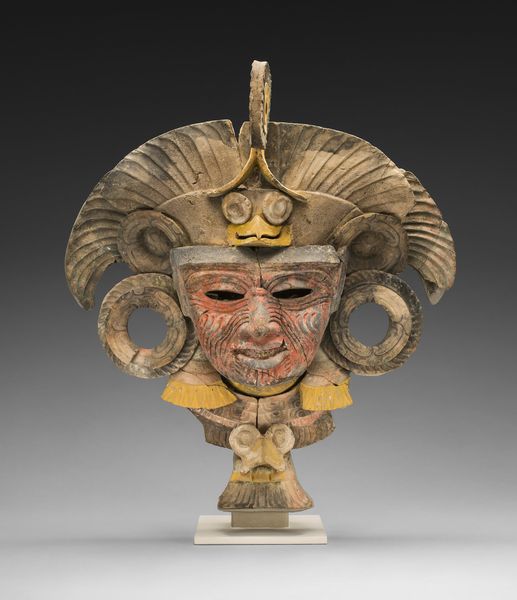
carving, sculpture, wood
#
carving
#
traditional media
#
figuration
#
sculpture
#
child character design
#
wood
#
indigenous-americas
Dimensions: 17 x 13 x 3 11/16 in. (43.18 x 33.02 x 9.37 cm)
Copyright: Public Domain
This is a Hopi carving of a Butterfly Maiden Kachina. The Butterfly Maiden, or Palhik Mana, is a symbol of beauty, transformation, and the vital connection between humans, nature, and the spirit world. Note the elaborate headdress, reminiscent of butterfly wings. The butterfly motif, a symbol of metamorphosis, appears across cultures, from ancient Greece, where Psyche, the soul, is depicted with butterfly wings, to Mesoamerica, where it is associated with deities and the afterlife. The Hopi see the Kachina as a bridge to the divine, embodying the spirits of ancestors and natural forces. The symbolism of the butterfly speaks to the cyclical nature of life, death, and rebirth, reflecting the human yearning for renewal and transformation. This echoes through time, resonating with our collective subconscious.
Comments
minneapolisinstituteofart almost 2 years ago
⋮
In Hopi cosmology, there are over 250 spirits known as kachinas (or katsinas). The kachinas visited this world long ago from the clouds, but now only their representatives appear in Hopi villages from winter solstice to mid-July. These representatives, men dressed in masks and outfits representing the individual kachinas, conduct ceremonies that maintain harmony and teach Hopi values. Traditionally, the kachina dancers gave children small sculptures of the kachinas during the ceremonies. Parents hang them on the wall at home to use as educational tools for teaching Hopi beliefs to their children. The kachina you see here is known as the Butterfly Maiden or Palhik Mana. Her role is to underscore the importance of regeneration and yearly renewal. She can be identified by the symbols she wears: the irregular edges of her tableta (headdress) represent rain clouds, the small wooden objects protruding from the top of her head symbolize flowers, and the rectangular design on her forehead represents an ear of corn. The black geometric designs on the torso and lower body are like those found on Hopi textiles.
Join the conversation
Join millions of artists and users on Artera today and experience the ultimate creative platform.
